Toro Muerto (Dead Bull) is the rather peculiar name for a fairly large tract of desert not far from the small pueblo of Corire. It is "famous' for a series of petroglyphs, carvings of animals, shapes and figures, on big rocks scattered all over the area. Not much is really known about these, or the people who made them, as there has been very little other archeological evidence found around them. The area was evidently not used as a settlement and does not appear to have been a significant ceremonial site. The style of the markings suggest that they may well have been first made by the Wari people between 1500 to 1000 years ago although they may have been added to in later periods up to the Incas.
We took a local bus from Arequipa for the three hour journey through the mountains (nothing in South America ever seems to be really close). We knew that Toro Muerto is up in the desert awy from the road but the track is supposed to be a signed a few kilometers before you reach Corire. We asked the driver to let us off there and he seemed to understand what we wanted. Sadly we were mistaken. We were following the route on our sketchy map and we knew we were close but the next thing we knew we were pulling into Corire. We approached a taxi driver about taking us back but he wanted what appeared to be a very high price for a very short trip. He insisted that it was a long way and very high but we had our instructions that implied it would be only a short walk.
So we set out to retrace our steps to the turn off, which was a bit further than we had expected. We then headed uphill passing through some fields towards the desert. After a fair amount of walking we reached another little sign that indicated that the entrance was a further four kilometers uphill (and we knew that there were a couple more steep kilometers from the entrance to the stones themselves)
We realised at this stage that the taxi driver had been right and our guidebook directions were definitely wrong! Still we were committed at this stage so we continued our uphill path, past shelters and grazing animals on miniscule smallholdings, to the ticket office arriving in the early afternoon.
We had to sign in and realised that only six tourists, including ourselves, had visited that day so this can't be described as a tourist honeypot. The young man showed us a rough map of the area (but didn't give us a copy) and indicated the way to the stones. Essentially his instructions were, 'keep walking uphill towards a disused telegraph pole and when you see the white house with the letters AM on it, keep uphill and to the left. It will take you about half an hour'. This did not really prepare us for the absolute vastness of the desert when we got out there. Although behind us were the green spaces of the valley bottom, in front and all around us lie dry sand and rocks stretching as far as the eye could see. It was hard to judge the distances and impossible to tell, beyond the landmarks that he had pointed out, if we had gone astray.
The route, as you might imagine, was considerably more complex than his instructions, the white house just a couple of crumbling walls, and we were quite relieved when we finally reached a brow and saw in front of us the small shelter that marks the first of the large white rocks.These rocks on which the petroglyphs are carved were thrown out during volcanic explosions about 50 million years ago in the Valley of the Volcanoes, nearly 100 kilometers away. Although it is clear that these rocks stand out as different to the basic stuff of the desert here, it is interesting to speculate why people felt the need to ascend to this lonely place and make their marks
Printed on the back of the ticket was a sketchy route around the stones but attempting to use it would be a recipe for disaster. With no clear landmarks and an undulating surface it would be easy to get lost. The fierce sun and difficult sandy surface also meant that walking around was pretty slow going. We opted to follow a broad arc through the stones, keeping the shelter within sight.
The markings are really strange. Many represent animals such as snakes, birds, llamas and pumas, the stuff of all ancient art in this area, interspersed with figures that are clearly human. Amongst the markings were some groups of lines and symbols that did not convey anything obvious to us.
On many rocks are zigzag markings that struck us as lightning but some reading suggests that they are related to water. Certainly looking around this arid spot (the fertility of the valley is more recent) there seems to have been little else to stimulate art than the lack of water and the need for animals to sustain life.
Sadly, many of the rocks are not in good condition. Some of the deterioration probably comes from the stresses of the harsh sun (during the day the rocks become too hot to touch). Others appear to have been deliberately fractured, perhaps so visitors can take home a souvenir carved rock. And of course others suffer from the seemingly inevitable graffiti. Sad that all the effort made to make these marks, perhaps a thousand years ago, can be spoiled by someone's desire to put their name on a stone.
We made our way back down to the road and flagged down a passing bus to return us to Arequipa. It had been a long day and we reflected how in England we would never set out on a day return trip that involved six hours on a bus. South America is giving us a new perspective on terms like 'close' and 'nearby'!
Strange markings at Dead Bull!
Tuesday, March 23, 2010
 Toro Muerto, Arequipa, Peru
Toro Muerto, Arequipa, Peru
Other Entries
-
76Wines, Bikes, Barnsley and Bernard O'Higgins
Jan 1666 days prior Mendoza, Argentinaphoto_camera45videocam 1comment 1
Mendoza, Argentinaphoto_camera45videocam 1comment 1 -
77Over the Andes to Santiago
Jan 2359 days prior Santiago, Chilephoto_camera95videocam 0comment 8
Santiago, Chilephoto_camera95videocam 0comment 8 -
78Carnival Time in Paradise Valley!
Jan 2755 days prior Valparaíso, Chilephoto_camera89videocam 0comment 6
Valparaíso, Chilephoto_camera89videocam 0comment 6 -
79City of churches, craft stalls and penguins!
Jan 3151 days prior La Serena, Chilephoto_camera55videocam 1comment 1
La Serena, Chilephoto_camera55videocam 1comment 1 -
80More Marys than you can shake a skull stick at.
Feb 0645 days prior San Pedro de Atacama, Chilephoto_camera91videocam 3comment 1
San Pedro de Atacama, Chilephoto_camera91videocam 3comment 1 -
81Mountains, lakes, salt plains & altitude sickness
Feb 0843 days prior Uyuni, Boliviaphoto_camera82videocam 1comment 5
Uyuni, Boliviaphoto_camera82videocam 1comment 5 -
82Dead people, dead trains and dead electrics!
Feb 1041 days prior Uyuni, Boliviaphoto_camera30videocam 0comment 3
Uyuni, Boliviaphoto_camera30videocam 0comment 3 -
83Let the festivities begin (but not in the convent)
Feb 1338 days prior Potosi, Boliviaphoto_camera78videocam 0comment 0
Potosi, Boliviaphoto_camera78videocam 0comment 0 -
84No sugar but lots of water and... dinosaurs!
Feb 1932 days prior Sucre, Boliviaphoto_camera61videocam 0comment 5
Sucre, Boliviaphoto_camera61videocam 0comment 5 -
85Possibly the highest capital city in the world...
Feb 2328 days prior La Paz, Boliviaphoto_camera89videocam 1comment 4
La Paz, Boliviaphoto_camera89videocam 1comment 4 -
86Shining Lake Titicaca (when it isn't raining).
Feb 2625 days prior Copacabana, Boliviaphoto_camera47videocam 1comment 2
Copacabana, Boliviaphoto_camera47videocam 1comment 2 -
87Despite the name, it's not always sunny here!
Feb 2823 days prior Isla del Sol, Boliviaphoto_camera51videocam 0comment 0
Isla del Sol, Boliviaphoto_camera51videocam 0comment 0 -
88Incas, Pre-incas and a load of willies.
Mar 0518 days prior Puno, Peruphoto_camera113videocam 0comment 0
Puno, Peruphoto_camera113videocam 0comment 0 -
89Road blocks, demos and a scenic journey to Cusco
Mar 0617 days prior Cusco, Peruphoto_camera76videocam 0comment 5
Cusco, Peruphoto_camera76videocam 0comment 5 -
90Touring the Sacred Valley
Mar 0716 days prior Ollantaytambo, Peruphoto_camera50videocam 0comment 8
Ollantaytambo, Peruphoto_camera50videocam 0comment 8 -
91Visiting the Inca sites around the city.
Mar 0914 days prior Cusco, Peruphoto_camera46videocam 0comment 3
Cusco, Peruphoto_camera46videocam 0comment 3 -
92The White City
Mar 167 days prior Arequipa, Peruphoto_camera92videocam 0comment 2
Arequipa, Peruphoto_camera92videocam 0comment 2 -
93Strange markings at Dead Bull!
Mar 23 Toro Muerto, Peruphoto_camera32videocam 0comment 0
Toro Muerto, Peruphoto_camera32videocam 0comment 0 -
94Colca Canyon 1: Snow and the Ice Maiden
Mar 252 days later Chivay, Peruphoto_camera17videocam 0comment 2
Chivay, Peruphoto_camera17videocam 0comment 2 -
95Colca Canyon 2: Watch out, condors about!
Mar 274 days later Cabanaconde, Peruphoto_camera56videocam 1comment 1
Cabanaconde, Peruphoto_camera56videocam 1comment 1 -
96Colca Canyon 3: Hot and Passionate
Mar 285 days later Arequipa, Peruphoto_camera21videocam 0comment 0
Arequipa, Peruphoto_camera21videocam 0comment 0 -
97More lines and symbols but this time they're BIG!
Mar 318 days later Nazca, Peruphoto_camera41videocam 0comment 2
Nazca, Peruphoto_camera41videocam 0comment 2 -
98Sun worshipping through the years
Apr 0412 days later Trujillo, Peruphoto_camera62videocam 0comment 2
Trujillo, Peruphoto_camera62videocam 0comment 2 -
99We go in search of GOLD!
Apr 0715 days later Chiclayo, Peruphoto_camera58videocam 0comment 4
Chiclayo, Peruphoto_camera58videocam 0comment 4 -
100Sun, surf and a very loud children's fairground
Apr 1119 days later Máncora, Peruphoto_camera22videocam 0comment 3
Máncora, Peruphoto_camera22videocam 0comment 3 -
101In search of exotic animals: we find iguanas
Apr 1321 days later Guayaquil, Ecuadorphoto_camera21videocam 0comment 1
Guayaquil, Ecuadorphoto_camera21videocam 0comment 1 -
102We arrive and dive.
Apr 1624 days later Puerto Ayora, Ecuadorphoto_camera64videocam 2comment 1
Puerto Ayora, Ecuadorphoto_camera64videocam 2comment 1 -
103We set sail, eventually.
Apr 1725 days later Bartoleme, Ecuadorphoto_camera46videocam 0comment 4
Bartoleme, Ecuadorphoto_camera46videocam 0comment 4 -
104Iguanas in all their many forms.
Apr 1826 days later Santa Fe Island, Ecuadorphoto_camera32videocam 0comment 3
Santa Fe Island, Ecuadorphoto_camera32videocam 0comment 3 -
105Not all the animals here are friendly.
Apr 1927 days later San Cristobal, Ecuadorphoto_camera8videocam 0comment 1
San Cristobal, Ecuadorphoto_camera8videocam 0comment 1 -
106Albatross, fresh albatross!
Apr 2028 days later Espanola, Ecuadorphoto_camera29videocam 0comment 1
Espanola, Ecuadorphoto_camera29videocam 0comment 1 -
107Jen has mixed feelings about stingrays!
Apr 2129 days later Floreana, Ecuadorphoto_camera11videocam 0comment 1
Floreana, Ecuadorphoto_camera11videocam 0comment 1 -
108That's the way, A-a A-a, I like it!
Apr 2230 days later Isabela, Ecuadorphoto_camera25videocam 1comment 2
Isabela, Ecuadorphoto_camera25videocam 1comment 2 -
109Big Boy Diego struts his stuff and we fly out.
Apr 2331 days later Puerto Ayora, Ecuadorphoto_camera10videocam 0comment 1
Puerto Ayora, Ecuadorphoto_camera10videocam 0comment 1 -
110In the dangerous city we have too many cocktails
Apr 2533 days later Quito, Ecuadorphoto_camera31videocam 0comment 2
Quito, Ecuadorphoto_camera31videocam 0comment 2 -
111We look for the Virgin on the Rocks.
Apr 2634 days later Ipiales, Colombiaphoto_camera22videocam 0comment 0
Ipiales, Colombiaphoto_camera22videocam 0comment 0

 Toro Muerto, Arequipa, Peru
Toro Muerto, Arequipa, Peru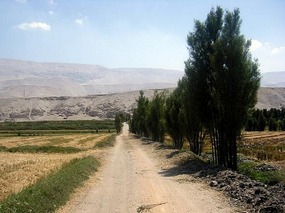
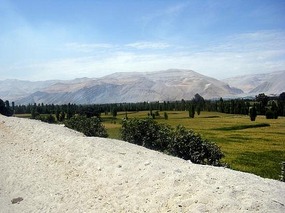
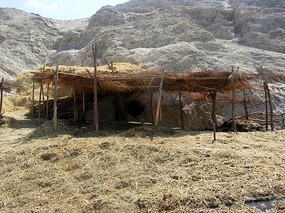
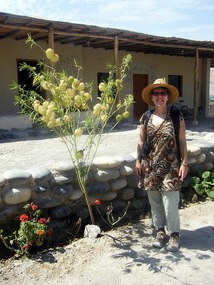
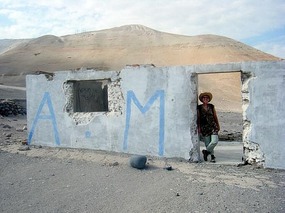
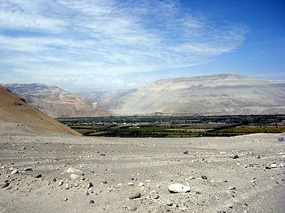
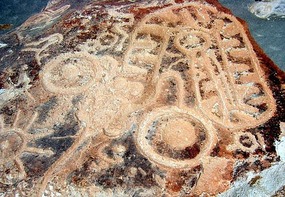
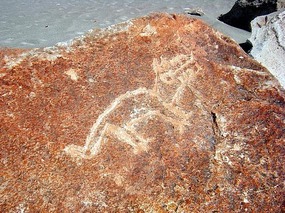
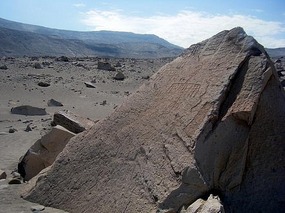
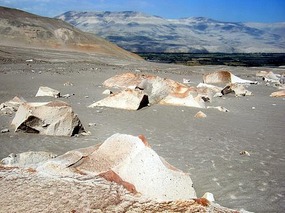






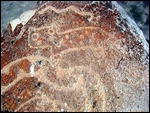
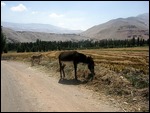


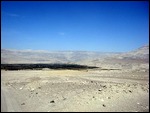

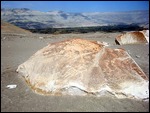

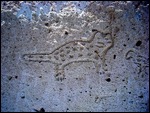
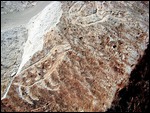
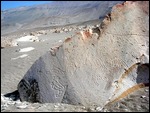

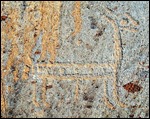
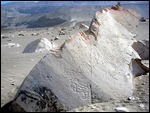
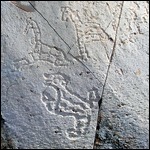
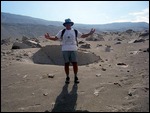
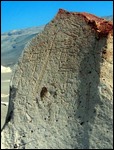
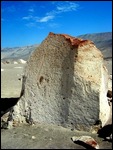
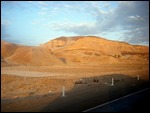
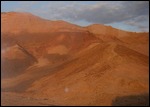
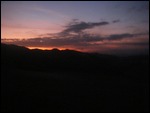

2025-05-22